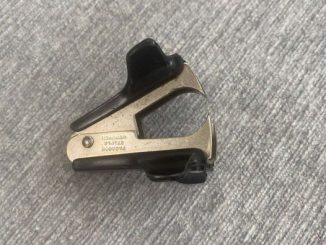
The Bryant family has suffered another devastating loss. Joe “Jellybean” Bryant, the father of late NBA legend Kobe Bryant, has passed away at the age of 69. Joe Bryant, a former professional basketball player himself, had a significant influence on Kobe’s life and career. His death, which occurred just four years after Kobe’s tragic passing in a helicopter crash, has added another layer of grief to an already heartbroken family.
A Life Steeped in Basketball For Kobe Bryant’s Family
Lakers’ Kobe Bryant, right, has a laugh with his father, Joe “Jellybean” Bryant, prior to participating in a pickup basketball game at Loyola Marymount on July 5, 2007

Joe Bryant’s life was deeply rooted in basketball, both as a player and coach. A forward who played in the NBA for teams like the Philadelphia 76ers and the San Diego Clippers, he spent the latter part of his playing career in Italy.
Where his young son Kobe honed his basketball skills. Kobe often credited his father’s professional experience for shaping his own path to NBA stardom. After retiring from playing, Joe transitioned into coaching, including stints in Japan and the WNBA.
The Challenges of Father-Son Relationships
Kobe Bryant, Vanessa Bryant, Gianna Maria Onore and Natalia Diamante at the Nickelodeon Kids’ Choice Sports Awards 2016 held at the UCLA’s Pauley Pavilion in Westwood, USA on July 14, 2016.


Though Joe and Kobe shared a passion for basketball, their relationship wasn’t without its challenges. Tensions between the two grew in the early 2000s, reportedly due to Kobe’s decision to marry his wife, Vanessa, at a young age.
Despite these difficulties, the two reconnected later in life, especially after Kobe became a father himself. Joe Bryant’s passing leaves a complicated legacy, both as a father who lost his son tragically and as a man whose basketball journey mirrored Kobe’s early years.
Tributes from the Basketball World

Following the news of Joe Bryant’s passing, tributes have poured in from across the basketball community for the Bryant Family.
Former colleagues and players have shared memories of Joe’s approachable personality, basketball knowledge, and how he made a positive impact on and off the court. His coaching career, particularly with the WNBA’s Los Angeles Sparks, left a lasting influence on many young players. “Joe was a true basketball mind,” a former colleague said. Reflecting on the depth of his knowledge and his unique ability to mentor young talent.
A Legacy Carried by the Bryant Name

Joe Bryant’s death marks another chapter in the complex yet significant legacy of Kobe Bryant’s Family. From the streets of Philadelphia to the courts of the NBA and beyond, Joe’s life had a profound impact on those who knew him.
His influence, both in Kobe’s career and in his own right as a player and coach, will be remembered by many in the basketball world. His passing is a reminder of the personal and professional sacrifices made by those who dedicate their lives to the game.
Final Farewell

As the basketball world mourns the loss of Joe Bryant, his memory will continue to inspire the next generation of players.
Both for his contributions on the court and his role in shaping Kobe Bryant into the icon he became. The Bryant family’s strength and resilience in the face of repeated tragedies is a testament to their enduring legacy in the sport and beyond.
Sources
“Joe ‘Jellybean’ Bryant, father of Kobe Bryant, dies at age 69” ESPN. July 16, 2024.
“Joe ‘Jellybean’ Bryant, father of Kobe Bryant, dies at age 69” ABC News. July 16, 2024.
“Joe ‘Jellybean’ Bryant, Kobe Bryant’s father, dies at 69” USA Today. Scooby Axson. July 16, 2024.
“Joe ‘Jellybean’ Bryant, father of late Lakers legend Kobe Bryant, dies at 69” LA Times. Steve Henson. July 16, 2024.
What’s this object called?

Answers from the Community
- Trench lighter – I’ve got one from my father. It was often made from spent rounds with a few modifications to create a lighter. I had a .20 caliber case with an old threepenny coin soldered in the base, which was also a lighter.
- Army lighter that lights in the wind while covering the flame to avoid getting your face shot off.
- It is a lighter, but it might be a replica.
- It’s a miniature nuclear bomb hand grenade. DON’T pull the pin!
- Looks like a copy of an Austrian 1920s IMCO windproof lighter.
- Looks like a bobbin for an old treadle sewing machine.
- It’s a lighter – I’ve got one made of brass.
- Windless lighter – hard to find parts for it, but worth the effort to make it work. Awesome find!
- Miniature German hand grenade used by trained suicide ferrets in WWI. They ran up your pants leg and detonated at a critical junction, thus damaging many Privates’ privates.
- Military torchlight for when you can’t light campfires.
- I haven’t seen one of those in a long time.
- Trench lighter from WWII.
- Windproof lighter.
- I have one and it’s a lighter.
- It’s a coconut, duh.
- Prototype proto pipe.
- Steampunk suppository.
- Fire starter, flint.
- A vintage lightsaber.
- A vibrator from 1890.
The WW1 Trench Lighter: A Piece of History
The WW1 Trench Lighter stands as an iconic piece of history, highlighting the ingenuity born out of necessity during wartime. Soldiers in the trenches of World War I needed a reliable way to light their cigarettes or pipes amidst harsh conditions. Traditional lighters often failed in the wet and muddy environment of the trenches.
The Invention
Enter the Trench Lighter. This simple yet effective device, typically made of metal, featured a hinged mechanism that protected the flame from wind or rain. Soldiers could easily ignite it with one hand, keeping the other hand free.
Craftsmanship and Resourcefulness
These lighters were often crafted from spent bullet casings or other scrap materials found on the battlefield. This showcased the resourcefulness of soldiers. Beyond their primary function of providing light and fire, they became cherished keepsakes, serving as tangible reminders of wartime experiences.
Collector’s Item
Today, WW1 Trench Lighters are sought after by collectors and history enthusiasts, offering a tangible connection to the soldiers who once carried them.
The Trench Lighter’s Legacy
Also known as a “pipe lighter” or “pocket lighter,” the WW1 Trench Lighter holds a unique place in military history. Born from the needs of trench warfare, these lighters were not just functional tools but also symbolic artifacts of soldierly resilience and innovation.
Design and Durability
Typically crafted from brass, steel, or other durable metals, the Trench Lighter consisted of a tubular casing with a hinged lid protecting the flame. Inside, a flint and striking wheel mechanism produced a spark, igniting the fuel reservoir.
Adaptability
Designed to withstand the damp, muddy, and windy environment of the trenches, the hinged lid shielded the flame and prevented fuel loss, ensuring reliable ignition even in adverse weather.
Sentimental Value
Many soldiers crafted their own lighters using readily available materials, adding a personal touch. Engraved initials, regimental insignia, or other markings often adorned these lighters, transforming them into cherished mementos of camaraderie, hardship, and survival.
Enduring Legacy
Though the heyday of Trench Lighters ended with WWI, their legacy endures. Today, these vintage lighters are prized by collectors and history enthusiasts, offering a tangible link to the past.



Leave a Reply